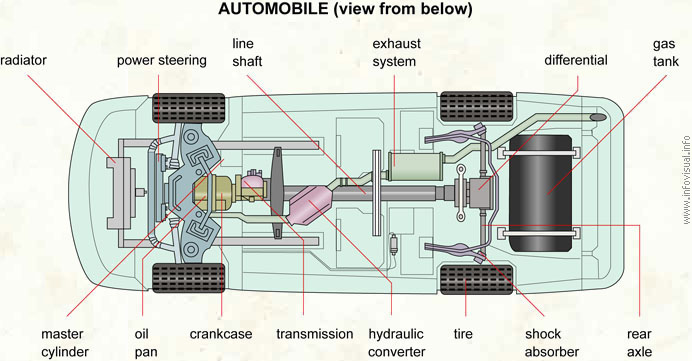Automobile (view from below)

Radiator: apparatus that cools the motor.
Power steering: mechanism that automatically amplifies the movements of the steering wheel.
Line shaft: axle on which mechanical power is transmitted to the wheels.
Exhaust system: network of pipes through which spent gas is expelled.
Differential: gear system connecting the two axles of a car.
Gas tank: container used for storing extra gas.
Rear axle: bar that crosses the bottom rear part of a vehicle. The rear wheels are attached to its ends.
Shock absorber: device for reducing shocks.
Tire: band of rubber composed of a casing of textile and iron, covered with rubber and containing a air tube.
Hydraulic converter: device using static energy to modify the electric current.
Transmission: device carrying engine power to axles.
Crankcase: metal envelope protecting the clutch.
Oil pan: liquid tight metal envelope containing oil.
Master cylinder: type of container in which the piston is moving.
Photo :
EN : Bells
(ceramic)
FR : Cloche
ES : Campana

A bell is a simple sound-making device. The bell is a percussion instrument and an idiophone. Its form is usually an open-ended hollow drum which resonates upon being struck. The striking implement can be a tongue suspended within the bell, known as a clapper, a small, free sphere enclosed within the body of the bell, or a separate mallet. Bells are usually made of cast metal, but small bells can also be made from ceramic or glass. Bells can be of all sizes: from tiny dress accessories to church bells weighing many tons.